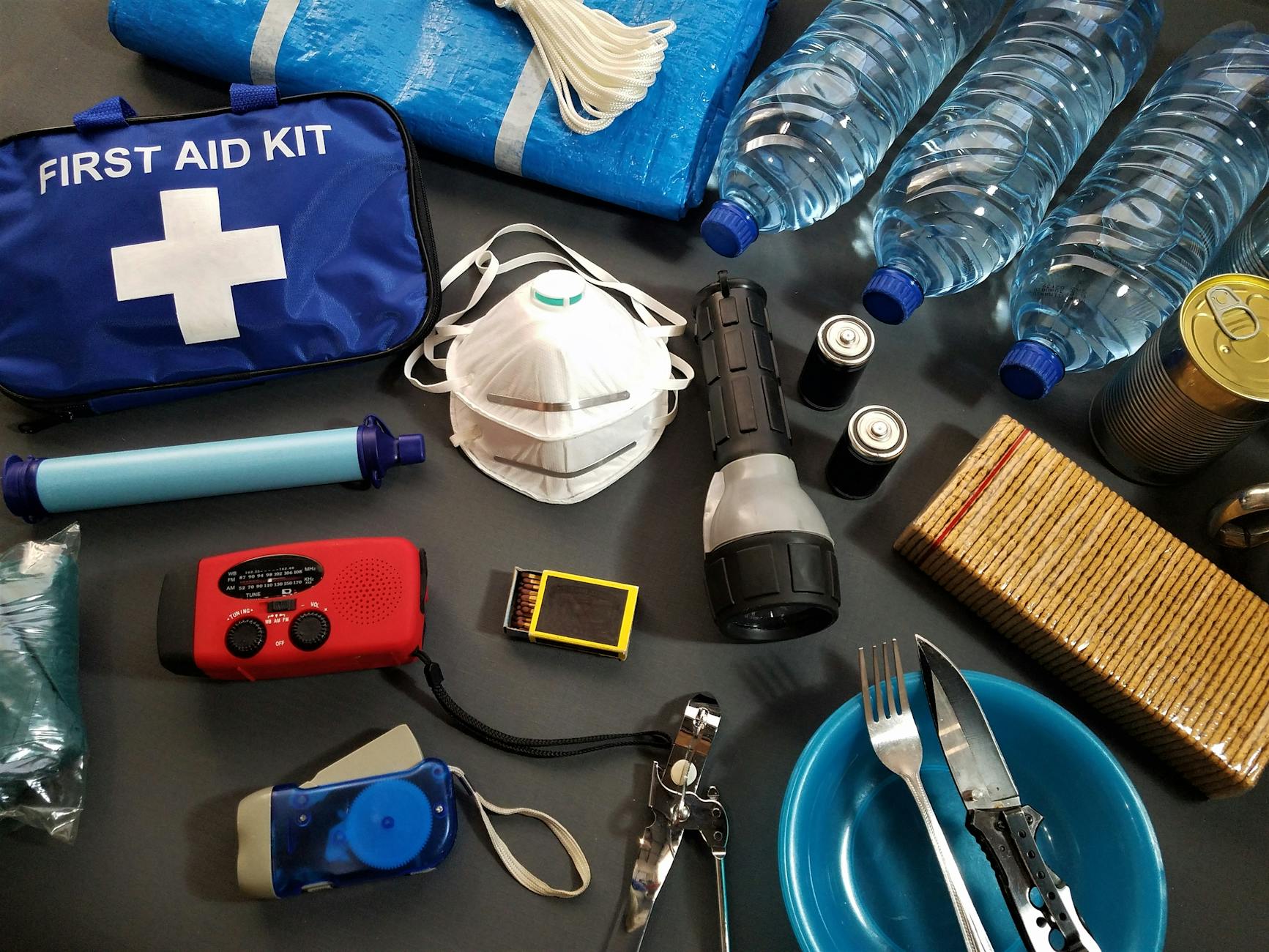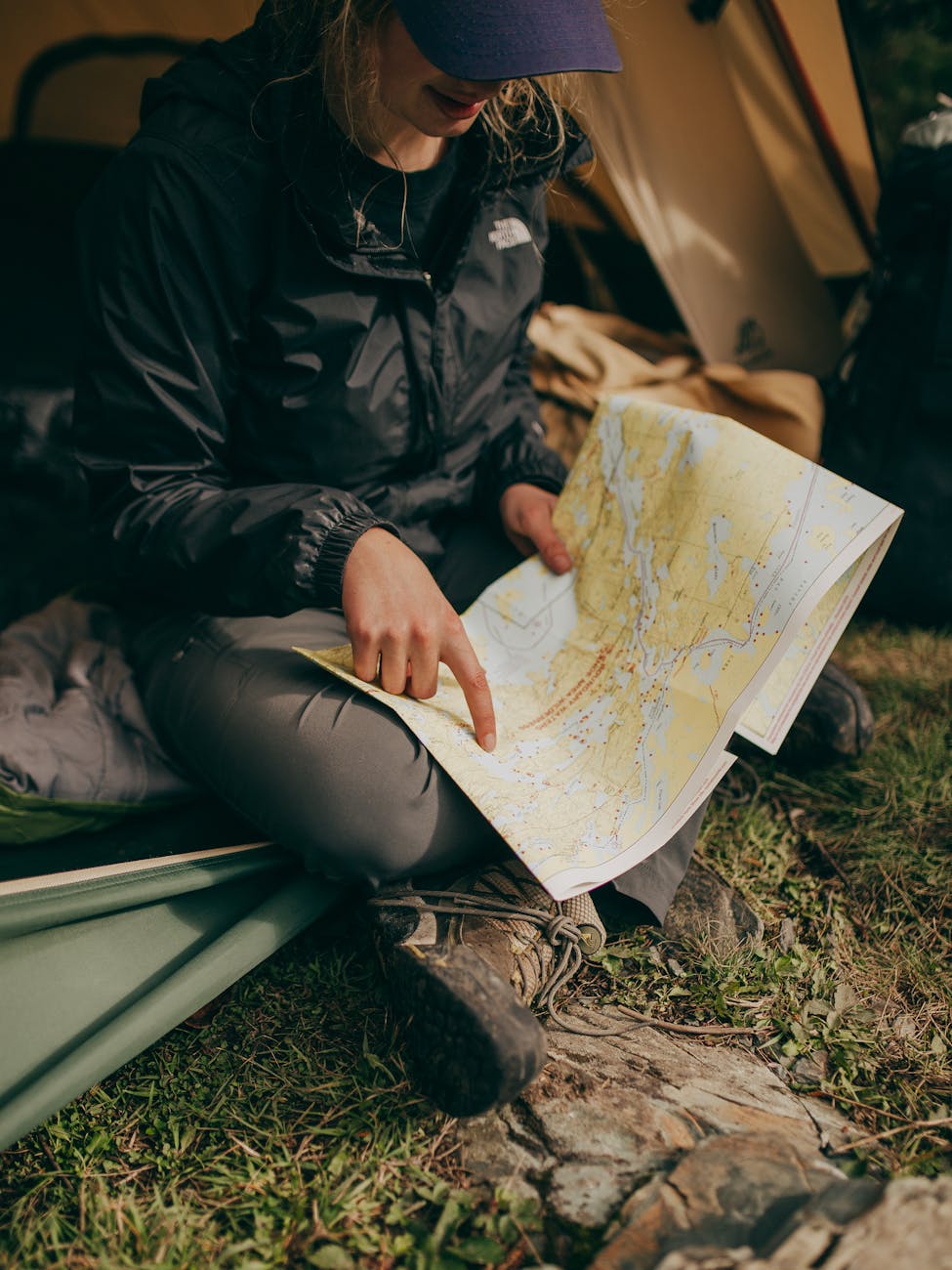We may earn money or products from the companies mentioned in this post. This means if you click on the link and purchase the item, I will receive a small commission at no extra cost to you ... you're just helping re-supply our family's travel fund.
What’s a bug out bag? It’s an important part of any emergency preparedness plan, making sure you’re safe and ready.

By taking the time to prepare a bug out bag, you can face emergencies with more confidence and peace of mind, knowing you have the essential tools and supplies you need.
Without it, you’d be much more vulnerable.
1. What is a Bug Out Bag?
A bug out bag is essential for emergencies.
These bags are designed to hold necessary items for survival, serving as a pre-prepared kit for any unexpected disaster or emergency. They provide a reliable solution for you and your family. Typically, a bug out bag is packed with enough supplies to sustain a person for at least 72 hours.
This kit can be a lifesaver.
From natural disasters such as hurricanes, earthquakes, and floods to man-made emergencies such as power outages or evacuations, a well-stocked bug out bag can make all the difference. It acts as a portable survival kit.
Creating a bug out bag requires careful planning. You need to decide what essentials are crucial for your specific needs, ensure all family members have their requirements met, and maintain the bag periodically to keep it up-to-date and functional. Having a well-prepared and thoughtfully assembled bug out bag fosters a sense of security and self-reliance, empowering you to handle crises with resilience and confidence.
Now, it might be tempting to get a bug out bag that’s colorful, and in some situations, such as if you’re in the wilderness and want to be found, that’s ideal. But what if you need to blend in? For example, maybe there is civil unrest and you have to book it out of a city on foot. You don’t want to draw any attention to yourself. Consider having two. One for situations where visibility is important, and another for when you want to blend in. For those kind of situations, a simple, neutral colored backpack is preferred, rather than a tactical bug out bag.
2. Importance of a Bug Out Bag
A bug out bag is essential for survival.
In an emergency, time is critical. You might not have the luxury to gather essential items when evacuation becomes necessary. Having a bug out bag ready ensures you can quickly grab what you need and leave safely. It can make the difference between life and death.
Preparation enhances peace of mind.
A well-prepared bug out bag not only provides physical resources but also offers mental assurance. Knowing you’re ready for anything boosts confidence and reduces last-minute panic.
Their importance cannot be overstated. By proactively assembling a bug out bag, you show foresight and prudence, ensuring that even in the most challenging circumstances, you remain ready to face any obstacle with determination and unwavering spirit.
3. Key Items for a Bug Out Bag
When putting together a bug out bag, focus on essential sustenance, first aid, and navigation tools. Consider items such as non-perishable food, water purification tablets, multi-tool kits, and communication devices. This careful selection equips you with the necessary resources to stay in control, even in the most unpredictable situations.
Bug out bag list of essentials:
3.1. Water and Hydration
Water is absolutely essential in any emergency situation. A well-prepared bug-out bag must include ways to ensure clean, drinkable water.
To address this need, consider items such as Lifestraws, water bottles with built-in filters, and purification tablets. These tools allow for the safe consumption of water from various sources.
Humans can survive longer without food than without water.
Always remember to stash at least one gallon of water per person per day for both drinking and sanitation. By planning ahead for your water needs, you can protect your health and stay strong, ready to tackle any emergency that comes your way.
3.2. Food and Nutrition
Proper emergency food and nutrition are vital for your emergency kit.
When building a bug out bag, aim for shelf-stable, easily portable, and calorie-rich items. These foods should not only provide enough sustenance in emergencies but also be convenient to eat on the go. Essential choices include energy bars, freeze-dried meals, canned goods, and nuts.
Focus on high-calorie, nutrient-dense foods.
These options are key to providing the nutrition you need to not just survive but thrive in tough situations. By packing a variety of non-perishable and energy-packed foods, you can maintain your strength and mental clarity.
Consider dietary restrictions while packing, keeping individual nutritional needs in mind. As you assemble your bug out bag, look for products with a long shelf life to ensure your emergency provisions stay good during extended storage.
This is the freeze dryer we use at home to help with our preps.

3.3. Shelter and Warmth
IIn emergency situations, shelter and warmth are vital for your safety and well-being, so make sure to include them in your go bag.
Prioritize items such as a lightweight emergency bivvy, thermal blankets, and a high-quality tarp. These essentials can protect you from harsh elements, providing a reliable barrier against wind, rain, and cold. With these tools, building a temporary shelter becomes much easier.
It’s also important to pack fire-starting tools. Carry waterproof matches, lighters, and fire starters so you can quickly produce heat, ward off hypothermia, and cook food. These capabilities are crucial for maintaining both physical comfort and mental resilience in a crisis.
Choose gear that serves multiple purposes to enhance your preparedness. An emergency tent that sets up quickly or a compact sleeping bag rated for low temperatures can make a big difference. This equipment gives you confidence, knowing you can face unpredictable conditions with the right tools to sustain and protect you.
3.4. First Aid Supplies

IIn times of crisis, medical emergencies can happen, making first aid supplies a must-have in any bug out bag.
Start by including basic medications such as aspirin, antihistamines, and pain relievers to quickly address common ailments. Add adhesive bandages, gauze pads, and antiseptic wipes to manage minor wounds and prevent infections. This helps you stay proactive about potential health issues.
A first aid manual can be incredibly useful. Having straightforward instructions equips you with the knowledge to administer essential first aid treatments confidently during emergencies.
Also, consider packing items such as splints, tweezers, and scissors to handle unexpected injuries. By focusing on well-rounded first aid supplies, you make sure your bug out bag is ready to meet health crises head-on. This kind of preparation can make a huge difference in keeping your family safe and well during emergencies.
3.5. Tools and Gear

Having the right tools and gear can make all the difference in an emergency situation.
- Multi-tool: A versatile implement that combines multiple functions. This multi-tool has 19 functions in one.
- Portable stove: Facilitates cooking when primary sources are unavailable. There’s a reason these are so popular with thru hikers.
- Fire starter: Essential for warmth, cooking, and signaling. These are really easy to get a fire going, while these are popular because they’re even more compact.
- Water filter/purification tablets: Ensures safe drinking water. These are the exact tablets we have.
- Flashlight/headlamp: Provides illumination in dark environments while keeping your hands free. We have a headlamp for each of our bags.
- Rope or paracord: Versatile uses include shelter building and securing items. You can even use paracord for fishing.
- Duct tape: Repairs, patches, and can create makeshift solutions. We’re big fans of this tape.
- Maps and compass: Crucial for navigation when technology fails. This is the compass we use, and the map you get should be for your region. AAA carries them!
Equipping oneself with these tools can significantly enhance survival chances.
Each item serves a critical purpose, ensuring readiness for a variety of scenarios.
3.6. Clothing and Footwear
Choosing the right clothing and footwear for your bug out bag is essential for staying comfortable and protected in tough environments.
Focus on durable, weather-appropriate clothes that you can layer. Look for moisture-wicking socks and quick-dry fabrics to keep you comfortable during strenuous activities. Pack a set of thermal layers, a waterproof jacket, and a hat to stay warm, dry, and shielded from the elements.
Good footwear is key for getting around. Choose sturdy, waterproof hiking boots that offer great support and durability. Also, consider packing an extra pair of shoes for versatility, so you can adapt to different terrains.
3.7. Personal Documents and Cash

Keeping essential personal documents and cash on hand is indispensable during emergency scenarios.
- Identification Documents: Driver’s license, passport, social security card
- Financial Information: Bank account numbers, credit cards, checking books
- Insurance Papers: Health, property, and vehicle insurance policies
- Emergency Contacts: List of family members, friends, and important contacts
- Cash: Small bills and coins for transactions when electronic payments are not available
- Important Certificates: Birth certificate, marriage certificate, and any legal documents
- Local Maps: Physical maps of the area for navigation
Organizing these documents and funds securely can provide peace of mind. Store them in waterproof and fireproof containers for extra protection.
The importance of having immediate access to these essentials cannot be overstated; it ensures smoother and safer transitions during critical times.
4. Additional Tips for Packing
Consider the weight of each item.
An overloaded bug out bag can slow you down. The main goal is to move efficiently in emergencies, which can be hindered by excess weight. Focus on essentials and prioritize items with multiple uses for maximum efficiency.
Use durable and lightweight materials.
This ensures your bag is ready and reliable when needed most. Choose materials that are water-resistant and can withstand harsh conditions, keeping your survival gear intact.
Remember to check expiry dates for food and medical supplies.
Rotating these items regularly keeps your bug out bag current and effective. Checking expiration dates also gives you a chance to replace outdated items with new technologies and innovations, making sure your preparations are up to date.
5. Maintaining Your Bug Out Bag
Maintaining your bug out bag is just as important as choosing the right items for it. Regular upkeep ensures everything inside remains functional and effective during emergencies. How often should you check your bug out bag?
Since 2016, experts have recommended checking and updating your bug out bag every three months. This regular review helps you replace expired items, upgrade equipment, and reassess the local risks you might face.
Start by rotating perishable items such as food and medicine. These can expire or degrade over time due to environmental factors. Refresh these supplies routinely to ensure your bag is reliable when every second counts.
Test all your gear periodically to make sure it’s in working order. Check items such as flashlights, batteries, and multi-tools to ensure they are operational. Regularly replace anything that’s been used or might have deteriorated since the last review, keeping your bag efficient and ready.
Continually improving your bug out bag strengthens your preparedness. Simple, regular maintenance ensures your bag remains a steadfast ally in the face of uncertainty.
Frequently Asked Questions
What is usually in a bug out bag?
A bug out bag is a lifeline in emergencies.
It typically holds non-perishable food supplies such as energy bars and dried fruits to keep you going during a crisis. Hydration is key, so you’ll find water bottles and purification tablets to ensure you have safe drinking water.
Basic medical supplies are essential.
A first aid kit with bandages, antiseptics, and necessary medications helps you handle injuries and prevent infections. Tools like multi-purpose knives, flashlights with extra batteries, and fire-starting kits are practical for various situations.
Clothing for different climates, including thermal wear and a waterproof jacket, keeps you comfortable and protected. Important documents and a small amount of cash are indispensable, giving you access to identification and financial resources when needed. Equipping your bug out bag with these essentials empowers you to face emergencies with confidence and efficiency.
What is the difference between a bug out bag and a go bag?
A bug out bag and a go bag might seem similar, but they serve different purposes in personal preparedness. Both are essential in emergencies but cater to different needs and timeframes.
A bug out bag is meant for long-term survival, typically designed to sustain you for 72 hours. It includes essentials such as food, water, shelter, first-aid supplies, and tools to help you survive in various situations.
On the other hand, a go bag is for short-term evacuations, usually lasting a few hours up to a day. It focuses on immediate necessities such as identification, cash, phone chargers, and basic hygiene products, prioritizing quick access over extensive preparation.
While a bug out bag is often larger and more detailed, a go bag is lightweight, making it easy to grab and go. Together, they create a strong personal preparedness strategy, covering both short-term evacuations and longer crises.
In short, both types of bags are important, but they differ significantly in their scope and purpose.
What is the best food for a bug out bag?
When putting together a bug out bag, choosing the right food is one of the most important steps. You want items that are shelf-stable, packed with nutrients, and full of energy.
Non-perishable foods such as canned goods, dried fruits, and nuts are essential. They last a long time and help keep your energy levels up.
For convenience, meal replacement bars are excellent because they are compact and easy to carry.
Freeze-dried meals are also a great choice. They provide a balanced diet and are generally lightweight, making them easy to pack.
Don’t forget about hydration. Including powdered drink mixes can make water taste better and help replace lost electrolytes.
Focus on foods that require minimal preparation. This aligns with the need for efficiency and quick movement in emergency situations.
How heavy should a bug out bag be?
Every bug out bag needs a careful balance between essentials and weight. A heavy load can slow you down when you need to move quickly.
Ideally, your bug out bag should weigh around 10-15% of your body weight. This keeps it portable, allowing you to move quickly without too much strain. Customize the weight based on your strength and what you need most.
The best weight for your bag also depends on factors such as your physical fitness, the climate, and the terrain you’ll be dealing with. Packing lighter but high-quality gear can make a big difference in reducing the overall weight. The goal is to create a reliable, efficient bag tailored to your needs, ensuring you’re prepared while still being able to move easily.
When to update bug out bag supplies?
Preparedness is key to resilience—a well-maintained bug out bag ensures you’re always ready for the unexpected.
Make it a habit to update your bag regularly, ideally with the change of seasons. This allows you to adjust the contents based on weather conditions, ensuring you have the right gear for both extreme heat and cold.
Set reminders every six months to keep your supplies fresh and usable. Check items such as batteries, food, and medical supplies for expiration dates and replace them as needed to maintain their effectiveness and safety.
Life changes or shifts in family dynamics might also require you to re-evaluate your bag’s contents. For example, a new family member or a recent medical diagnosis could mean adding specialized items to meet new needs and ensure you’re fully prepared.
Where to keep bug out bag for emergencies?
Store your bug out bag in a spot that’s easy to reach, so you can grab it quickly during an emergency.
Keep the bag near an exit.
This makes for a fast and efficient evacuation.
Places like the main door or garage are great options.
If you travel often by car, keeping a bug out bag in your vehicle is a smart move. It ensures you have immediate access no matter where you are.
Also, think about having a second bag at work or another place you frequent. This way, you’re prepared for different scenarios.
The goal is to find convenient spots that don’t disrupt your daily routine but are easy to get to when you need them most.
Leave a Reply